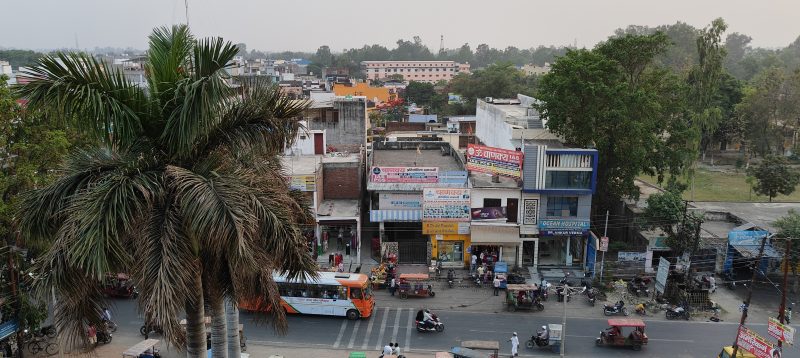Revisiting Dhampur Four Decades Later: First Impressions
Pushpa Pathak
May 28, 2024

(Picture Credit: Pushpa Pathak)
On 13th February 1979, I arrived in Dhampur Town, District Bijnor, Uttar Pradesh, to start my Ph.D. thesis field work. My research focus was on agro-industries as drivers of economic growth of a small town as well as of regional-rural transformation. Hence, I had selected a small town with a large sugar mill with the assumption that it will have strong linkages with the surrounding cane growing villages, which will contribute to rural development and prosperity.
As of 1971, Dhampur was a town of about 23,000 inhabitants living in about 2 square kilometers’ area. Based on then available literature on small towns, I had expected Dhampur to be a mofussil town that would not be much different from a large village. To my surprise, Dhampur was a compact little market town with well-defined streets for different kinds of businesses, with many buildings having shops on the ground floor and living spaces upstairs, and some solely residential gallis (lanes) that had mostly two-story houses stuck next to each other. Also, it was a very much a walkable town, with cycle rickshaws being the only mode of public transport. The town was surrounded by green agricultural fields. The Dhampur Sugar Mill was located about 5 Kilometers South-east from the town in the midst of these fields it involved taking a long rickshaw ride to get there.
Earlier this year on 18 February 2024, I returned to Dhampur to see how this small town has changed over four decades. I found that Dhampur has grown to be a settlement of about one lakh population, with residential and commercial development along all the five highways emanating from the town. There are large showrooms for cars and motor cycles, schools and colleges, hospitals and clinics, marriage banquet halls, shops and restaurants, and even a fancy stone façade four story Eurasia Palace Hotel. Several new residential colonies with apartment blocks and bungalows are being developed in the surrounding agricultural areas. Now there is a clear distinction between the compact core or old town and newly developed urban periphery, which is not yet legally recognized to be a part of the town. E-rikshaws popularly called `metro service’ have replaced cycle rickshaws. There are also a few three-wheeler auto-rickshaws as well as shared tempos running on fixed point to point routes.
To know more on how this small agro-industrial town is becoming a vibrant city, follow the study updates on: https://cprindia.org/project/four-decades-of-development-in-dhampur


